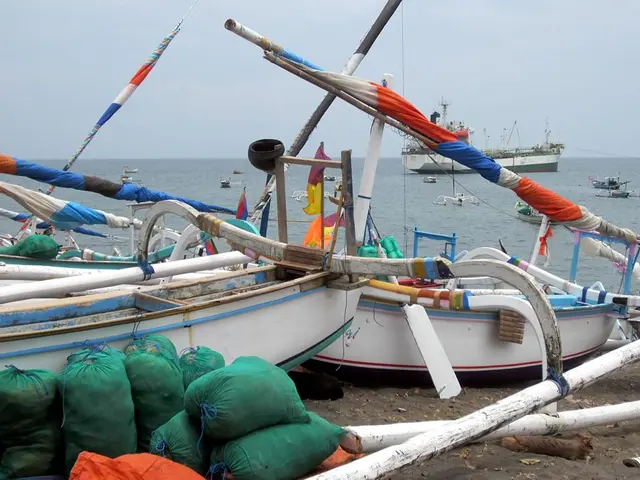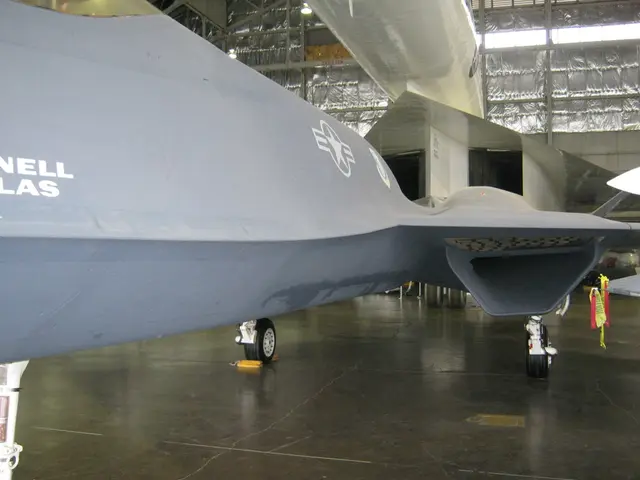Seat booking at 11A is not equivalent to purchasing life insurance, acknowleders.
A Peek into Survivor's Luck and Airplane Safety
In the world of aviation, renowned expert Heinrich Großbongardt, sheds light on an intriguing finding – seats at the rear of airplanes tend to offer a better chance of survival in crashes. This gem of insight came following the tragic crash of an Indian airplane where a single passenger survived, seated in 11A, a front-cabin window seat near the left-side emergency exit. But booking that particular seat isn't a guaranteed ticket to safety, notes Großbongardt.
In a macabre incident occurring in South Korea in late 2024, 179 lives were claimed while only two crew members sitting on foldable seats at the plane's rear end managed to survive. This incident, much like the Indian crash, demonstrated the seemingly advantageous position of seats towards the back.
Despite the statistical correlation between survival rates and rear-seat booking, Großbongardt can't pinpoint exactly why the Indian survivor escaped the disaster. "He had a stroke of blind, extraordinary luck," he remarks, adding that his extensive history in the aviation industry has led him to advice pertinent companies.
Skepticism aside, Großbongardt reiterates that airplanes represent the safest mode of transport. "Flying is safe, steadily growing safer," he asserts, attributing this to continuous safety investments by manufacturers in modern models. For instance, seats – once delicate structures – can now withstand an impressive load of about 1.3 tons without tearing apart during an accident.
According to the International Air Transport Association (IATA), accidents happened once every 880,000 flights in 2024, equating to a safe rate of 1.13 incidents per million flights.
So what makes the rear section of an airplane cabin safer? Several factors play a role:
- Strength and Impact Resistance: The rear section boasts greater structural strength, enabling it to better absorb impacts during a crash. This is due, in part, to the distribution of forces during a crash, which tends to put more strain on the front section.
- Force Reduction: When a plane breaks apart in a crash, the rear section typically experiences less deceleration force, reducing the likelihood of fatal injuries.
- Debris Management: The location of debris and the distribution of forces can impact survival rates. The rear section often encounters less severe debris impacts compared to the front.
- Evacuation: While not guaranteed, being closer to exits can affect evacuation times, though this isn't exclusive to rear seats.
That being said, the recent Indian airplane crash potentially deviated from conventional trends due to various factors. These could range from the specifics of the crash to individual circumstances and differences in aircraft design. In essence, while rear seats show promise in terms of survival rates, one shouldn't rely solely on this when figuring out the odds in a potential catastrophe. In most cases, adopting a lucky smile and hoping for the best might be the most crucial factor of all.
The industry expert, Heinrich Großbongardt, highlights the increased survival chances in certain seats, particularly those located at the rear of airplanes, as illustrated by a survivor situated in 11A, a front-cabin window seat, during the tragic crash of an Indian airplane. However, he cautions that booking a rear seat doesn't equate to guaranteed safety, as demonstrated by the South Korean incident where only two crew members in foldable rear-end seats survived amongst 179 fatalities.
Despite the apparent advantages of rear seats, Großbongardt attributes the Indian survivor's escape to sheer luck and advocates for continuous investments in modern aircraft safety features across the finance and transportation industries, ensuring that airplanes remain the safest mode of transportation.








